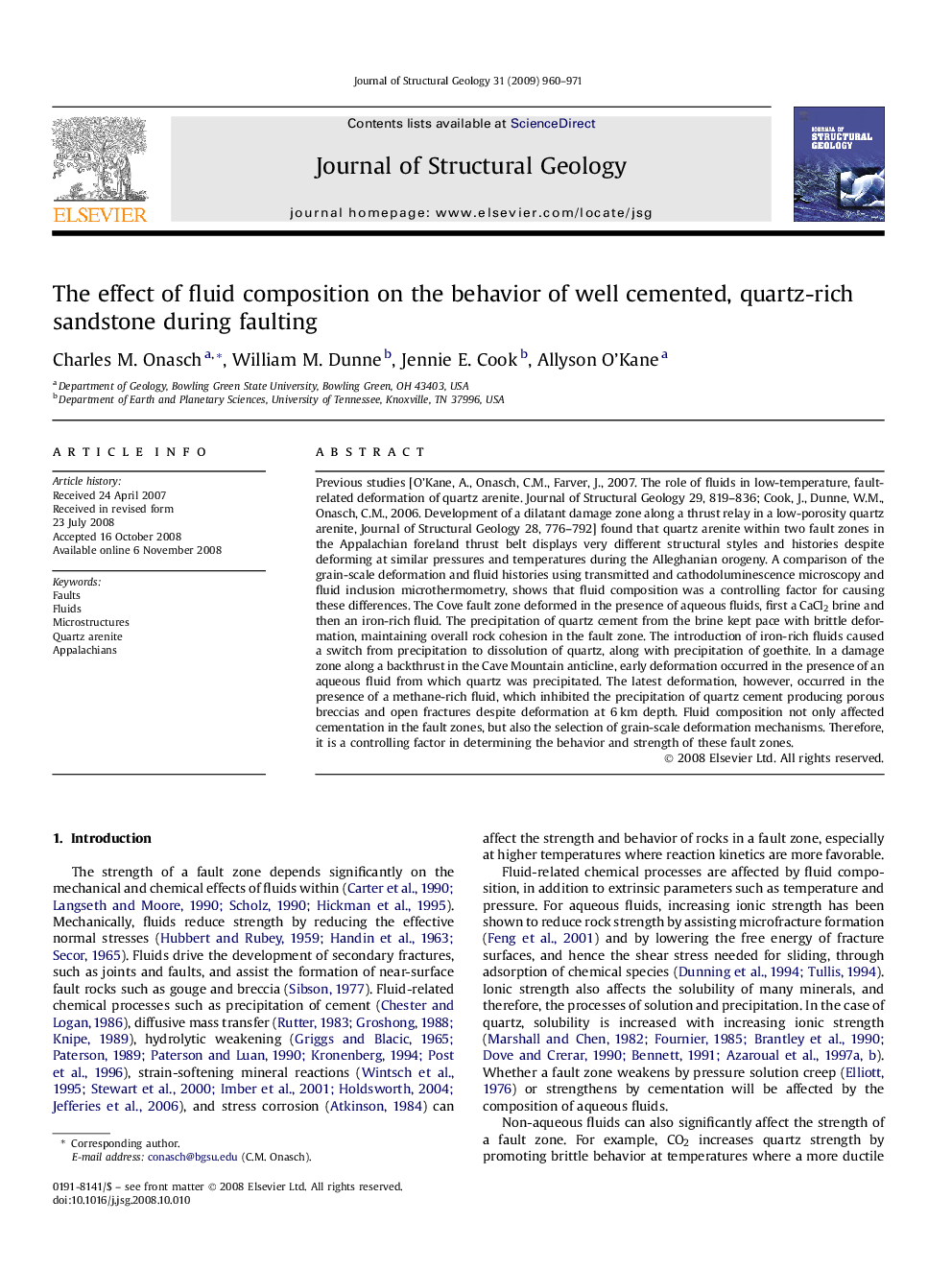| کد مقاله | کد نشریه | سال انتشار | مقاله انگلیسی | نسخه تمام متن |
|---|---|---|---|---|
| 4734209 | 1357078 | 2009 | 12 صفحه PDF | دانلود رایگان |

Previous studies [O'Kane, A., Onasch, C.M., Farver, J., 2007. The role of fluids in low-temperature, fault-related deformation of quartz arenite. Journal of Structural Geology 29, 819--836; Cook, J., Dunne, W.M., Onasch, C.M., 2006. Development of a dilatant damage zone along a thrust relay in a low-porosity quartz arenite, Journal of Structural Geology 28, 776–792] found that quartz arenite within two fault zones in the Appalachian foreland thrust belt displays very different structural styles and histories despite deforming at similar pressures and temperatures during the Alleghanian orogeny. A comparison of the grain-scale deformation and fluid histories using transmitted and cathodoluminescence microscopy and fluid inclusion microthermometry, shows that fluid composition was a controlling factor for causing these differences. The Cove fault zone deformed in the presence of aqueous fluids, first a CaCl2 brine and then an iron-rich fluid. The precipitation of quartz cement from the brine kept pace with brittle deformation, maintaining overall rock cohesion in the fault zone. The introduction of iron-rich fluids caused a switch from precipitation to dissolution of quartz, along with precipitation of goethite. In a damage zone along a backthrust in the Cave Mountain anticline, early deformation occurred in the presence of an aqueous fluid from which quartz was precipitated. The latest deformation, however, occurred in the presence of a methane-rich fluid, which inhibited the precipitation of quartz cement producing porous breccias and open fractures despite deformation at 6 km depth. Fluid composition not only affected cementation in the fault zones, but also the selection of grain-scale deformation mechanisms. Therefore, it is a controlling factor in determining the behavior and strength of these fault zones.
Journal: Journal of Structural Geology - Volume 31, Issue 9, September 2009, Pages 960–971